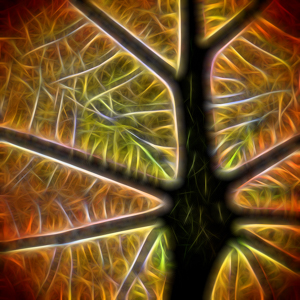So far, we have seen that ‘I’ thought = ahankAra= ego = sentient mind = mind with reflected consciousness. The ‘I’ thought (ahankAra) knows itself (ahankAra). It is always present in all experiences as ‘I’. ‘I thought’ remains the same. It is experienced as ‘I am’ ‘I am’, for e.g. “‘I’ know the book”, “‘I’ know the laptop”, “’I am fat” etc.
The ‘This-thoughts’ are thoughts corresponding to objects. ‘This-thought’ is variable, based on the object perceived.
Since these three are unreal, they are not eternal. They have a rising time and a disappearing time.
In the previous verse we saw that the world is dependent on the mind. This verse further elaborates it by stating the exact mechanism of the mind.
The world rises and disappears along with the ego; meaning the ‘This-thought’ depends on the ‘I-thought’. In other words, only when there is the ‘I-thought’ can then there be the ‘this-thought’. When the ‘I-thought’ is resolved, the ‘This-thought’ also resolves.
Hence, the appearance and disappearance of the world depends on the ‘I’ thought (ego). This is explained in the first two lines of the verse. This can be understood by considering the daily experience of sleep. In deep sleep, the mind (ego) is resolved. The ahankAra is temporarily not here. As soon as one gets ip, the mind is activated, the ego is ignited in the form of ‘I’. the ‘This-thoughts’ follow after this. The ‘This-thought’ does not directly come. The ‘I-thought’ is invoked first. The activities in the world are begun after this. Again, as soon as one goes to sleep, the mind is resolved and the the ego is not there temporarily. The ego gone, the world also does not exist. Hence, the world (this-thought) depends on the ego (‘I-thought’).
What then is the real ‘I’? We know that ‘I-Thought’ is not real, since it depends on consciousness. The mind has the ‘I-thought’ by the blessing of the consciousness otherwise it is inert matter. The origin of the ‘I-thought’ is in the mind , which is unreal. Hence, ‘I-thought’ is unreal, its origin being unreal and it being the kind which rises and sets.
The third line of the verse says that the real thing (self) is the substratum for the birth and death of the world (‘This-thought’) and the ego (‘I-thought’). The mind rises and resolves int eh basis, the self. Hence the world and ego finally depend on the Atma. everything rises, in the self, is sustained in the self and resolves in the self. The ego, the ‘I’ thought, the ‘this’ thought and the objects are all unreal. They are mere words with no substance, since, the basis is the self and they have no existence apart from the self. The clay pot, the clay saucer, the clay plate, the clay spoon are nothing but clay. The forms are incidental. There is nothing but clay. So also, the mind and world are mere appearances. The truth is the self. The consciousness in which all these shine alone is the truth.
The self is further explained as one, whole which has not birth and decay. The real thing has to be one since otherwise it would be finite. It has to be infinite and hence the whole. Being so, it has to be birth-less and decay-less meaning changeless. If it changes, it cannot be eternal.
The substratum on which the world, mind and its functions rise and set is the self. All except the substratum are unreal. The only truth is the basis behind the play.
The important lesson learnt in this verse is that not only should the world be negated as unreal but even the ego has to be included in the same category.


